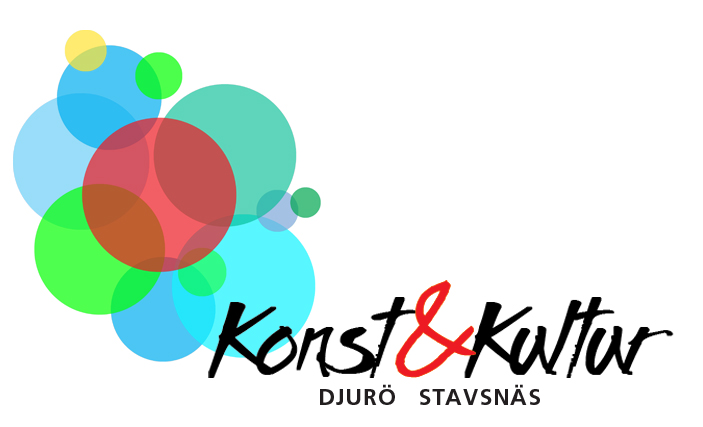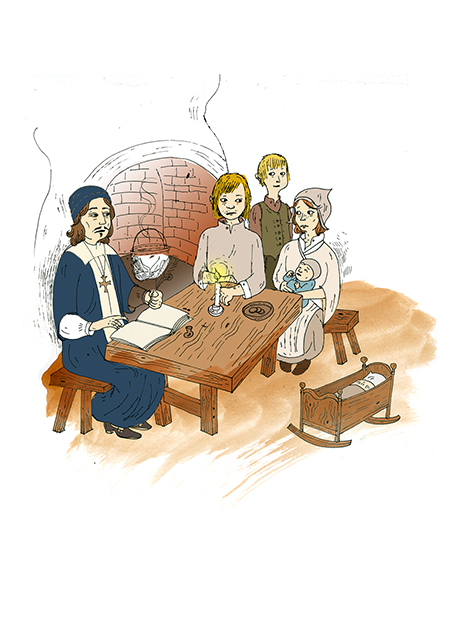Nature and Culture Trail Kyrkudden
4. Priests and Villagers
The priest was the long arm of the state – a government official and a figure of authority. He preached the word of God and taught the true faith. The priest also had to warn people about the evils of the world and the instruments of the Devil – trolls, witches and other creatures.In order for people to be able to embrace the Word of God, they needed to be able to read. The most important teaching tool was Luther’s Catechism, which often included an ABC book. Towards the end of the 17th century Swedes were generally able to read. The ability to write, on the other hand, didn’t become widespread until the 19th century.The priest was also responsible for testing his parishioners’ knowledge of Christianity. A group of people would gather in the parish hall, the rectory or in the home of a parishioner and the priest would examine them them individually. These tests were known as “household examinations”, and were held in Sweden until the end of the 19th century.A huge number of records of household examinations have survived and are kept in archives. The oldest book of household examination records from Värmdö dates from 1704. Most people had done their homework and could answer the priest’s questions, but occasionally, things didn’t go that well, as in the case of Per from Kvarntorp. The priest made the comment “has forgotten” by his name in the record. The result for Karin at the brickworks in Norrnäs was “no knowledge at all”. Sometimes the priest would write in Latin. The smith, Hans Hansson in Mölnvik was given “bene” – he had done his homework well. But Johan from Nora failed – “nihil” means that he didn’t know anything. And for Jöns, Nils, Johan and Anna in Tuna the priest wrote in Swedish “unable to read anything”.For stop number 5 carry straight on. It’s on the right-hand side where the road bends. |













